Ann Marie’s Fashion From The TV Series “That Girl” Has Become Retro Icons
Step back in time to the swinging 60s with “That Girl”! The beloved TV series followed the spirited actress Ann Marie as she struggled to “make it” New York City that captures the hearts of viewers everywhere. Marlo Thomas’s portrayal of Ann Marie catapulted her into stardom, while her chic Mod fashions and iconic bubble flip hairstyle became symbols of the era.
Ann Marie’s signature fashion
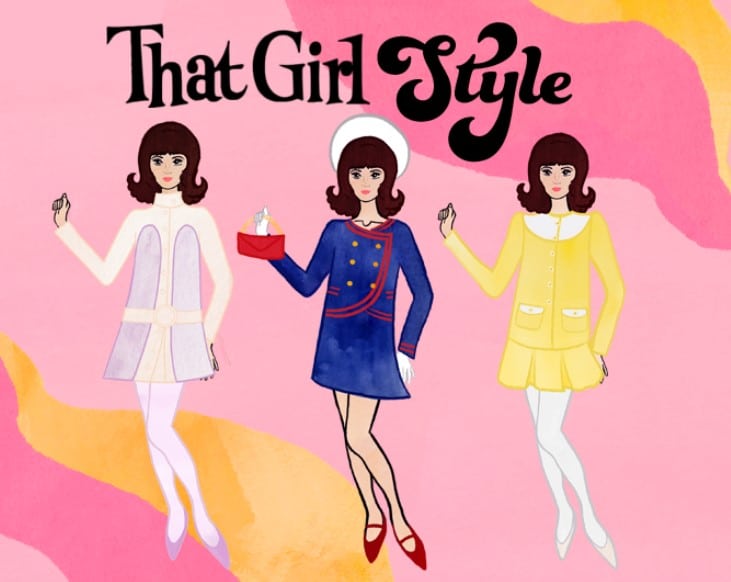
For five seasons of the hit show “That Girl”, Ann Marie served as an inspiration to women across generations, urging them to pursue their dreams with unwavering determination. Each episode, Ann Ann also dazzled audiences with her impeccable sense of style that embodies the latest fashion trends of the time.
Throughout the show, Ann Marie is depicted as a dynamic woman, running around the bustling streets of New York City in a stunning array of outfits. From chic Andre Courreges coats to vibrant Mary Quant shift dresses in shades of mustard, green, and pink, Ann is excellent in capturing the essence of each era’s fashion trends. Her outfits are meticulously accessorized with wide belts, gloves, oversized sunglasses, and patent leather boots that add an extra flair to her already impeccable style. “Ann Marie would never have been able to afford it, I don’t think even Marlo could [have] afforded it at that time!” Marlo Thomas later joked.
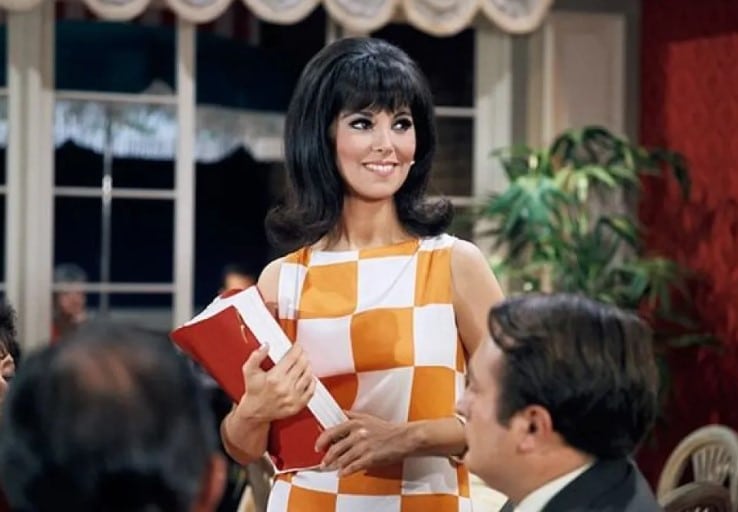
Thomas drew inspiration from fashion icons like Audrey Hepburn and Jacqueline Kennedy, as well as the vibrant scene of Swinging London, to create Ann’s signature look for That Girl.At the time the show was picked up, television wardrobes still “looked like The Donna Reed Show, very fifties,” Marlo recalled. However, Marlo, fresh from her theater stint in London, returned to America armed with a suitcase full of Mod fashion. Despite initial resistance from TV executives, Marlo insisted on incorporating this cutting-edge style into That Girl’s wardrobe. She said, “ “I kind of insisted that we do it because that was what was happening. It was in Vogue magazine, it just hadn’t really hit the streets yet.”
Eventually, the studio relented, and Ann’s playful and fashion-forward attire breathed new life into the small screen, standing in stark contrast to the prim and proper outfits worn by TV housewives of the era.
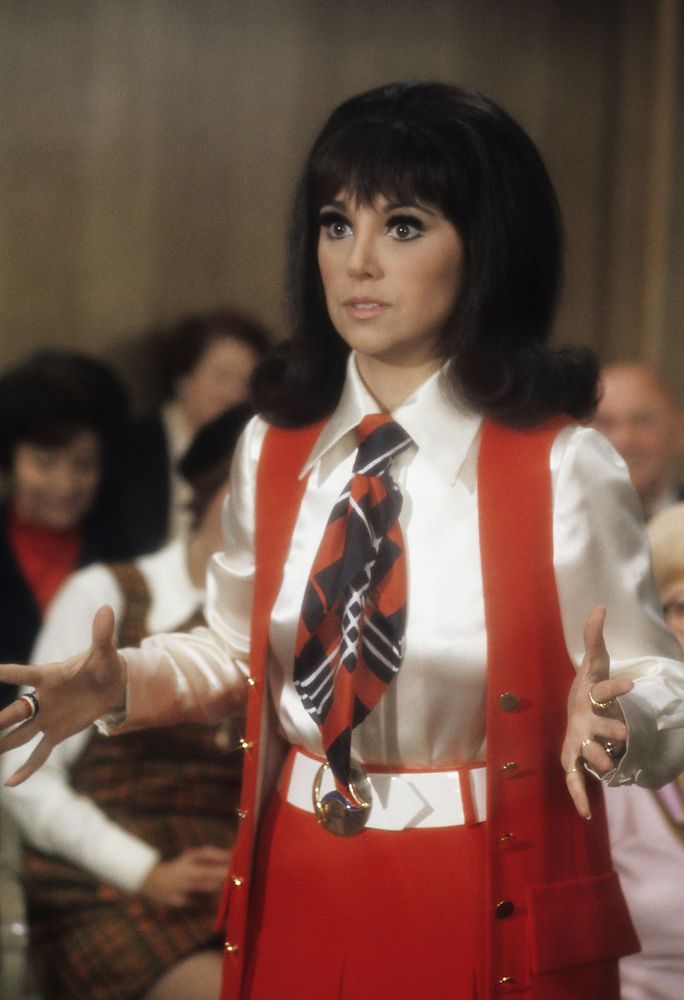
At the beginning of the show, viewers were impressed by Ann’s vibrant and playful wardrobe, often adorned in fun and colorful sheet dresses that boasted an A-line silhouette. The 1960s fashion was characterized by bold and lively colors and sometimes a more pastel shade. Accessories played a significant role in complementing these outfits that reflected the fashion trends of the era.
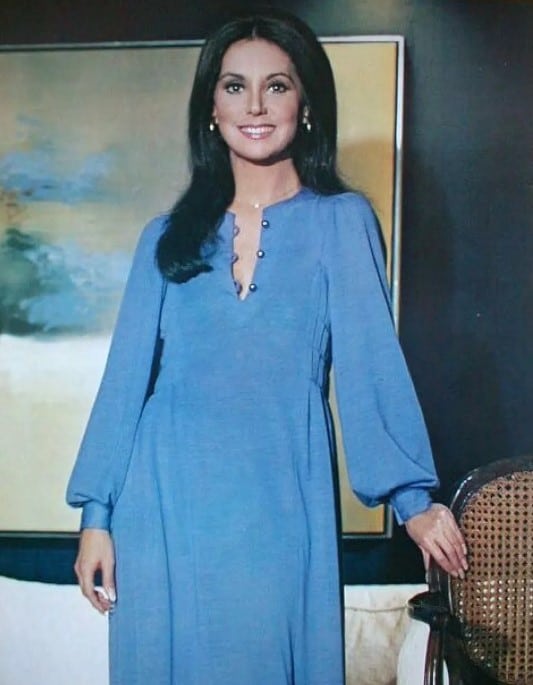
However, as the 1970s approached, a noticeable shift occurred in the color palette showcased on “That Girl.” A lot more neon colors and tones that typically clash are paired that truly happened in the 70’s . Gone were the days of subtle pastels, replaced instead by eye-catching hues that demanded attention. In this new era of fashion, simplicity reigned supreme, with bright colors and simple patterns over fancy accessories. The changes in “That Girl’s” style mirrored both the fashion trends and cultural shifts of the time.
Her iconic makeup and hair
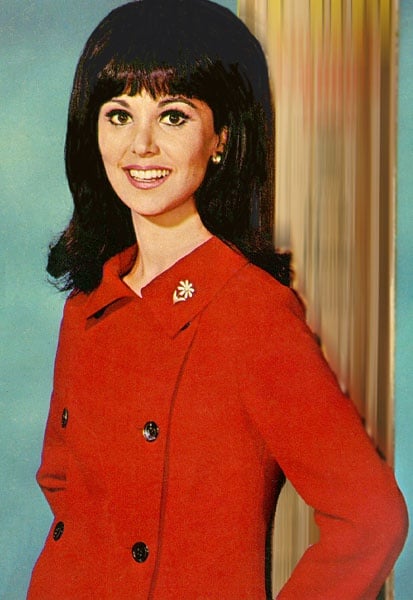
Ann Marie’s iconic makeup style focused on Marlo’s enchanting “Bambi eyes,” highlighted by winged eyeliner and an impressive three pairs of eyelashes. Completing the look were warm blush, frosted lipstick, and matching nail polish. However, stealing the spotlight was her lush, dark hair, styled in the signature “bubble flip” that became synonymous with the character. “That was my real hair!” Marlo Thomas laughed.
The importance of the hairstyle in defining Ann Marie’s character on That Girl was undeniable. When Marlo Thomas decided to grow out her bangs, the show’s main sponsor, Clairol, intervened. Refusing to let Ann Marie part with her signature look, they insisted on Thomas wearing a small wig just for her bangs, even likened to a mustache, for several years. It wasn’t until the final season that Ann Marie was finally granted permission to sport a center part, marking the end of an era for the beloved hairstyle.

